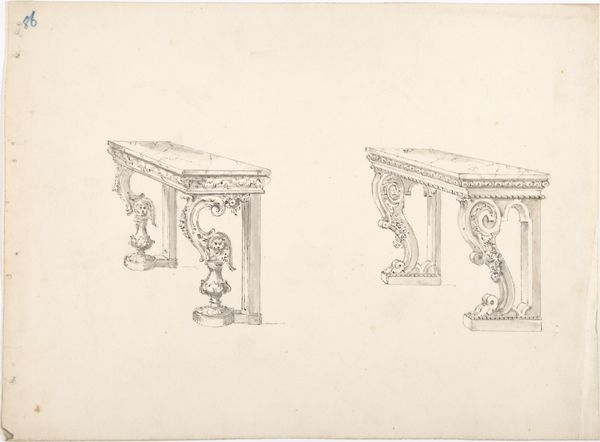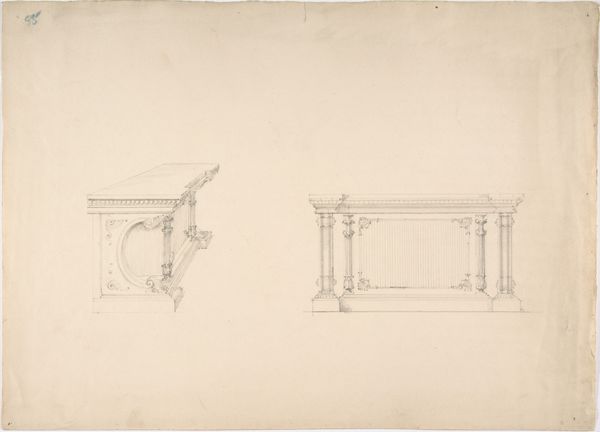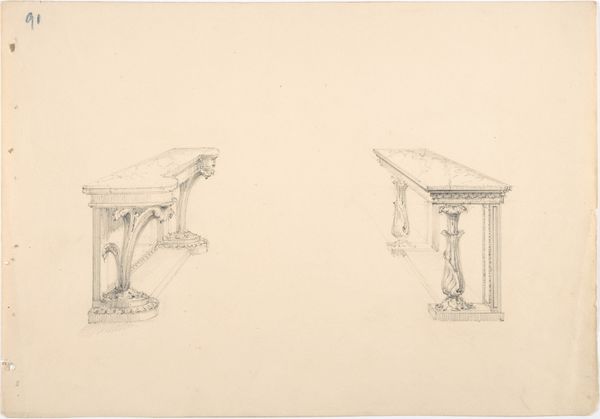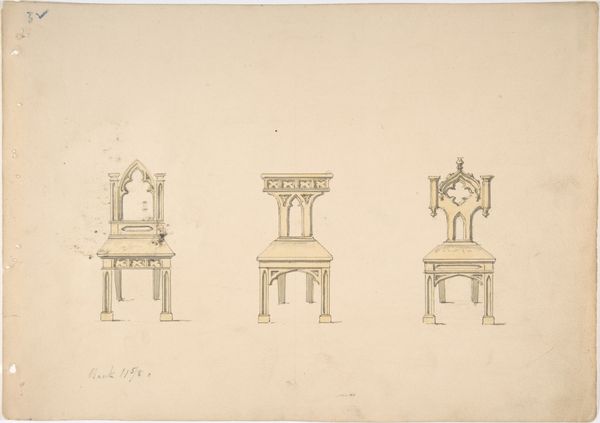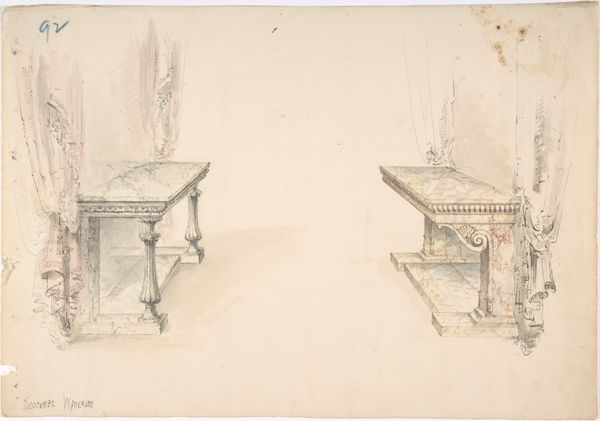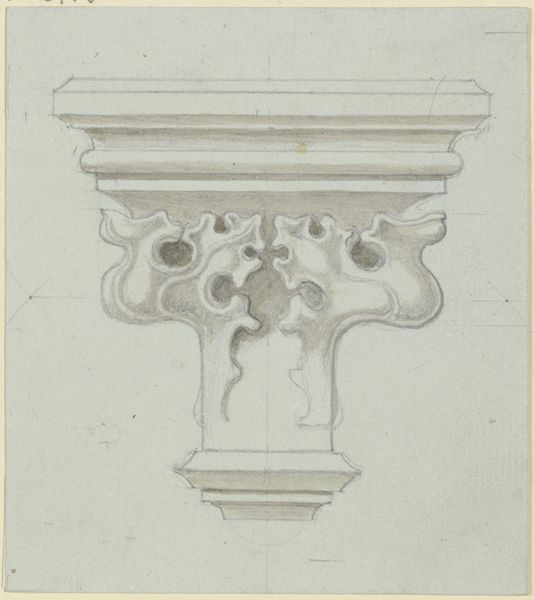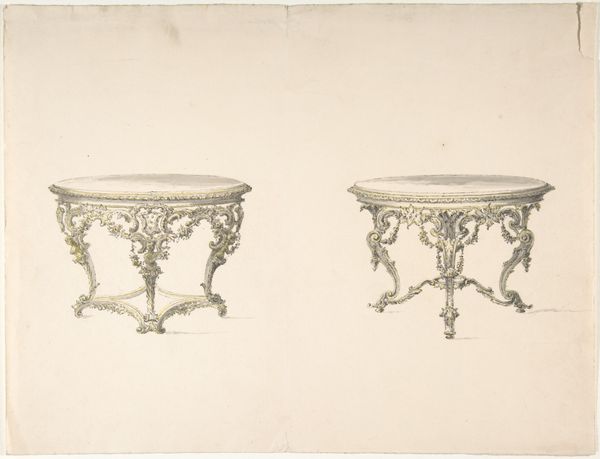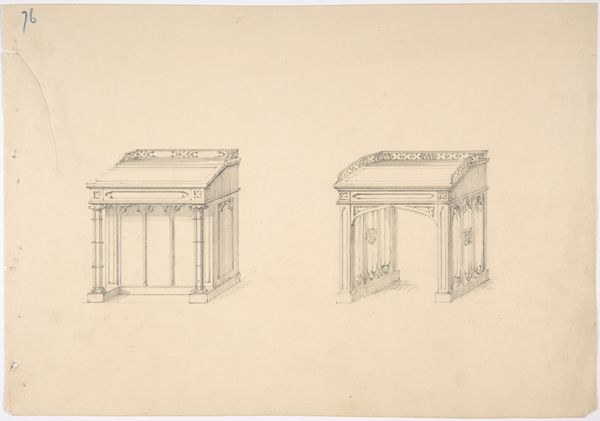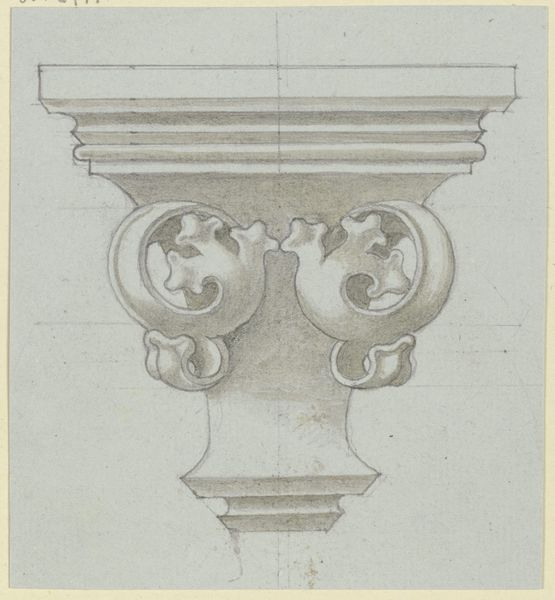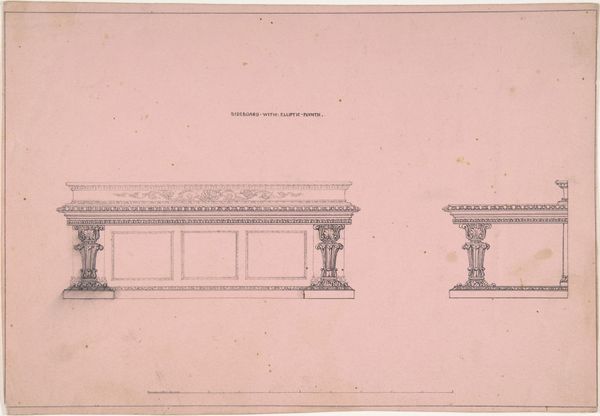
drawing, pencil
#
drawing
#
neoclacissism
#
form
#
pencil
Dimensions: sheet: 8 9/16 x 12 5/16 in. (21.8 x 31.2 cm)
Copyright: Public Domain
Curator: The restrained elegance here is quite striking. Editor: Indeed. It’s the simplicity. The subtle gray pencil lines. The entire composition gives me the feeling of cool, intellectual contemplation, almost like architectural stoicism. Curator: What we are seeing here is a work entitled "Design for Two Marble-topped Pier Tables," created sometime between 1800 and 1850 by an anonymous artist. It’s currently part of the collection at the Metropolitan Museum of Art. As you mentioned, it's executed primarily in pencil. Consider the historical context of Neoclassicism and how furniture design served to reinforce the status of the aristocracy by appropriating stylistic conventions from classical Greece and Rome. Editor: Absolutely. I'm struck by the table's symbolism. The marble tops themselves evoke eternity, their cool, hard surfaces representing the enduring values this class wanted to project. The sinuous curves and floral patterns carved into the supporting elements speak to luxury and status, but notice the symmetry and repetition, almost a cult of form. How was such overt visual messaging received or subverted, especially by subjugated or marginalized classes at the time? Curator: It's likely, if we analyze popular material culture that the very presence of marble tables would have immediately signaled inaccessibility. Luxury became both an aspirational symbol, and, perhaps inevitably, a site of ideological struggle. Do such loaded visual vocabularies function similarly today? Editor: Absolutely, consider how luxury brands telegraph exclusivity through specific logos, designs and associations. Here the neoclassical architectural forms echo power but perhaps with some added moral underpinning for good taste. Those associations carry through even now. Even the restrained color pallette, speaking of quiet discretion. Curator: Thank you for lending insight to these details. I hope visitors now consider how social power intersects with notions of aesthetics, how such visual signs continue to inform our perceptions of material wealth. Editor: And perhaps reflect on how everyday objects quietly transmit meaning across centuries, shaping our values and memories even now.
Comments
No comments
Be the first to comment and join the conversation on the ultimate creative platform.
